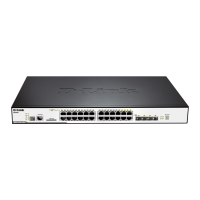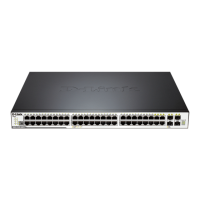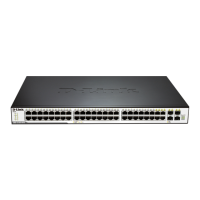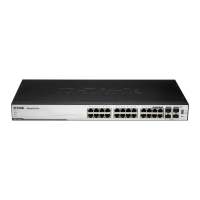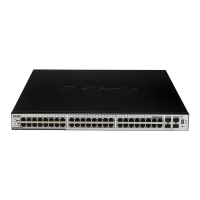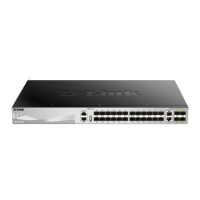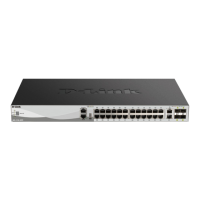Authentication Server
Failover
Click the radio buttons to configure the authentication server failover function.
Local. The switch will resort to using the local database to authenticate the
client. If the client fails on local authentication, the client is regarded as un-
authenticated, otherwise, it authenticated.
Permit. The client is always regarded as authenticated. If guest VLAN is
enabled, clients will stay on the guest VLAN, otherwise, they will stay on the
original VLAN.
Authentication Methods (EI
Mode Only)
The compound authentication method options include: None, Any (MAC,
802.1X or WAC), 802.1X+IMPB, IMPB+WAC, and MAC+IMPB.
None - all compound authentication methods are disabled.
Any (MAC, 802.1X or WAC) - if any of the authentication methods pass, then
access will be granted. In this mode, MAC, 802.1X and WAC can be enabled
on a port at the same time. In Any (MAC, 802.1X or WAC) mode, whether an
individual security module is active on a port depends on its system state.
802.1X+IMPB - 802.1X will be verified first, and then IMPB will be verified.
Both authentication methods need to be passed.
IMPB+WAC - IMPB will be verified first, and then WAC will be verified. Both
authentication methods need to be passed.
MAC+IMPB - MAC will be verified first, and then IMPB will be verified. Both
authentication methods need to be passed.
Authorized Mode Toggle between Host-based and Port-based. When Port-based is selected, if
one of the attached hosts passes the authentication, all hosts on the same
port will be granted access to the network. If the user fails the authorization,
this port will keep trying the next authentication method. When Host-based is
Click the Apply button to accept the changes made for each individual section.
Compound Authentication Guest VLAN Settings (EI Mode
Only)
Users can assign ports to or remove ports from a guest VLAN.
To view this window, click Security > Compound Authentication > Compound Authentication Guest VLAN
Settings as shown below:
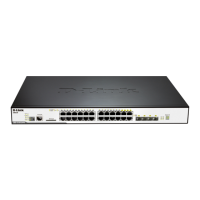
